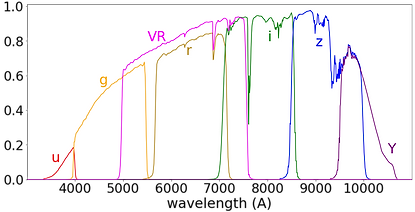
Research Topics
My thesis focused on the detection and analysis of solar system objects in the NOIRLab Source Catalog, which was created by my academic advisor, Dr. David Nidever.

NOIRLab Source Catalog (NSC)
The NSF's Optical-Infrared Astronomy Research Laboratory (NOIRLab) provides archived exposures from ground-based instruments; all publicaly-available data are included in the NOIRLab Source Catalog. The NSC is provided through NOIRLab's Astro Datalab (https://datalab.noirlab.edu).
DR1: Nidever et al. 2018
DR3: Fasbender et al. in preparation (expected 2024)
The most recent version available is DR2, which features:
-
>3/4 sky coverage with 7 years of observations
-
412,000 exposures from NOIRLab's Astro Data Archive
-
Dark Energy Camera + Blanco 4m Telescope at CTIO
-
Mosaic-3 Imager + Mayall 4 m Telescope at KPNO
-
90Prime Imager + Bok 2.3 m Telescope at KPNO
-
-
3.9 billion measurements of 68 billion objects
I am contributing to the processing of NSC DR3, which will include data from over 500,000 exposures and improvements to the measurement, calibration, and combination of sources (Fasbender et al. in preparation).
NSC DR2 exposure density plot, ecliptic coordinates.

The seven NSC passband filters, blue to red, are ugrizY and VR.
Solar System Objects (SSOs)
Most objects in the NSC are distant stars and galaxies; however, a fraction of the sources belong to objects orbiting our sun (SSOs).
We have developed two methods to identify measurements of SSOs in the NSC:
-
CANFind (Fasbender & Nidever 2021)
-
Tough Transform (Fasbender & Nidever, in preparation)
NSC DR1: 500,000 tracklets (Fasbender & Nidever 2021). The catalog is available for download in desktop mode (zipped file is 37MB, unzipped file is 70MB, beware!).
NSC DR2: 4 million measurements of 630,000 tracklets (Fasbender & Nidever, in preparation).

Four NSC exposures, captured ~20 minutes apart. The apparent motion of an object greatly depends on the distance to its observer; stars and galaxies appear nearly motionless, while more nearby objects orbiting the sun (like the asteroid circled above) typically exhibit higher apparent motion.